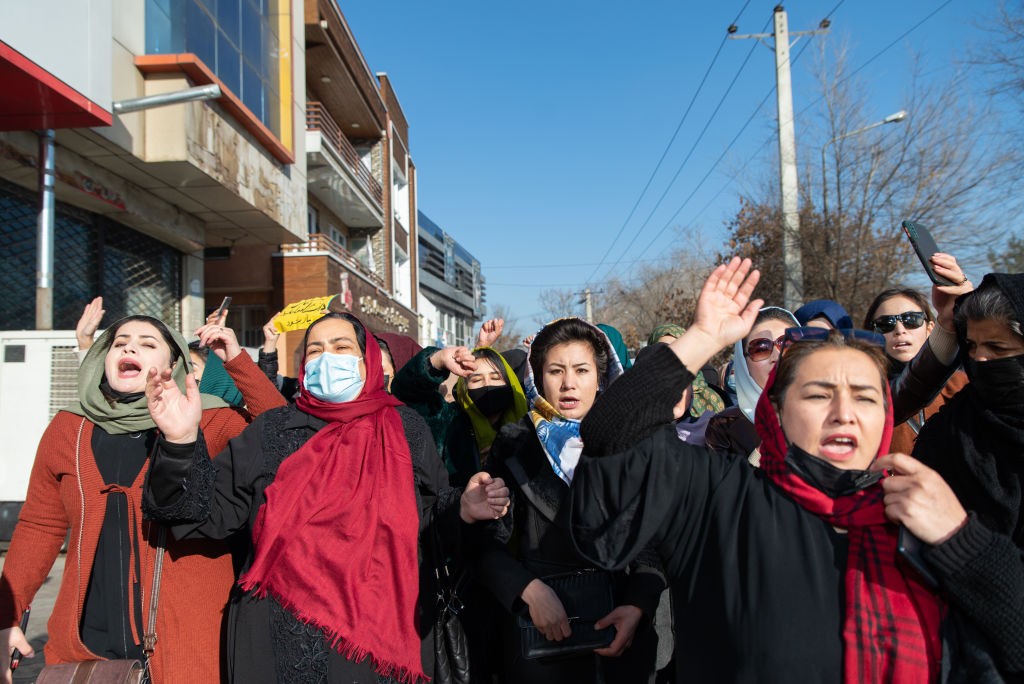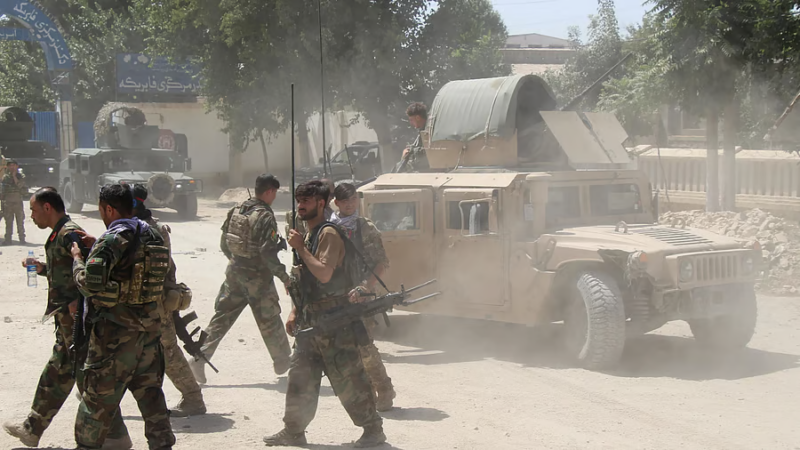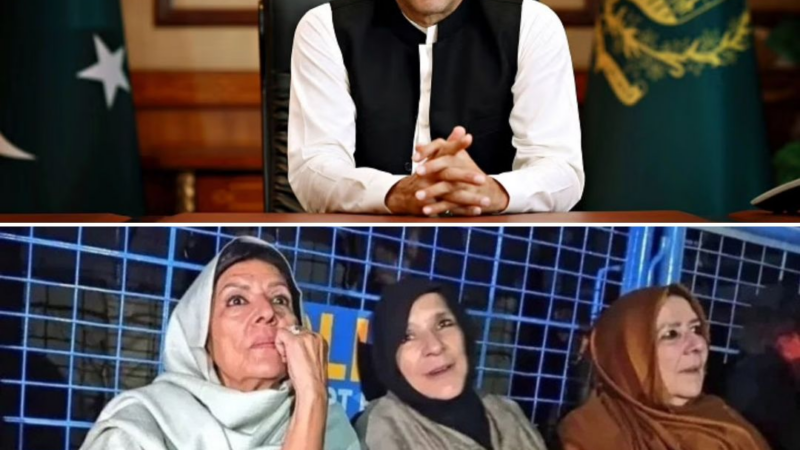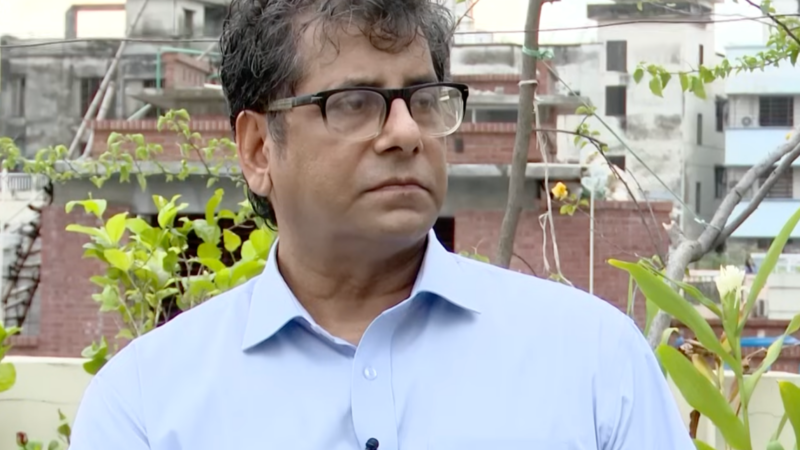Fighting Misogyny and Terrorism Together

In 2001, as the United States marshaled its forces against the Taliban in Afghanistan, the then-first lady offered a poignant message: “The fight against terrorism is a struggle for the rights and dignity of women.” While noble in its intent, and fundamentally true, this message never received the geopolitical attention that it merited.
Twenty years on, as we evaluate the outcomes of international interventions that siloed fighting terrorism and promoting human rights away from each other, a pressing question emerges: How can we fuse these imperatives, in order to push back a tide of extremism that continues to threaten the most vulnerable populations in the world?
The narrative of international security and foreign policy ignores gender, overlooking the crucial role women play in the fabric of societal stability.
In the grim landscape of global conflict, one element stands starkly at its core: the systematic oppression and subjugation of women. ISIS, Hamas and the Lord’s Resistance Army in Uganda use rape as a weapon of war. The resurgence of the Taliban demonstrates what an extremist terrorist group will do with an entire country: create a brutal reality where misogyny is not a byproduct but a fundamental pillar of extremist ideology. Extremists in Europe and the United States conduct deadly, misogyny-fueled lone wolf attacks.
The narrative of international security and foreign policy ignores gender, overlooking the crucial role women play in the fabric of societal stability. Even after 2000, even with the United Nations Security Council’s Resolution 1325 on Women, Peace and Security, the world only fitfully recognizes gender-based violence in armed conflict as a critical issue.
In practical terms, national security leaders do not take women’s rights seriously when seeking to take down terrorist networks. We saw this repeatedly in Afghanistan under the NATO-led intervention, when decisions were made by military and intelligence leaders to work with human rights violators in the Afghan security forces and to negotiate politically with the Taliban over a ‘counter-terror’ agenda, which in fact has allowed them to fully control, and terrorize, their own population.
The Taliban’s current rule in Afghanistan offers a case study in how gender-based violence is weaponized. Under their regime, the rights of women and girls have been drastically curtailed. A May 2023 Amnesty International report details horrific tactics such as torture of detainees or women who refuse marriage, child wives given to Taliban fighters, and forced marriages to subjugate and control families. The practice of giving child brides to Taliban fighters is not just a violation of human rights and an act of human trafficking; it’s a systematic method of entrenching patriarchal control and terror. Meanwhile, male family members are encouraged to keep their female relatives under strict control, or face punishment.
These are incidents are part of a broader strategy where violence against women is used to enforce extremist ideologies, cement political control, and reward followers.
This use of misogyny is replicated in various forms across the globe, with a disturbing overlap between extremist ideologies and the denigration and subjugation of women. A 2022 study by the International Peace Institute on “Masculinities and Violent Extremism” notes that ISIS “appealed to male recruits in part by glorifying violence against certain women and offering sex slaves as ‘spoils of war’ under strict rules set by the group’s leadership.”
A report by the U.N. Development Program asserts that while extremist recruitment takes place under widely different circumstances around the world, a “frequent commonality” is misogyny. In Southeast Asia and North Africa, there is a correlation between a misogynistic world view and support for extremists while far-right parties in Europe and India draw in men “with the promise of the subservience of women.” The rhetoric and actions of these groups resemble each other, albeit in different cultural and political contexts, reinforcing the notion that misogyny is a common thread that binds various forms of extremism.
The war that begins with women’s bodies does not end there. To effectively counter the scourge of terrorism, we must reject the false dichotomy between human rights and national security.
Confronting this reality requires us to reevaluate the long-standing narrative that posits a choice between caring about human rights and ensuring national security. This false choice has led to flawed policy approaches, where the protection and empowerment of women are seen as secondary to the broader goals of combating terrorism.
However, the truth is that these objectives are not mutually exclusive; rather, they are complementary. Ignoring the rights of women in the name of national security is not only morally indefensible, but strategically shortsighted. It overlooks the fact that societies where women are oppressed and marginalized are more susceptible to instability and conflict, which in turn can become breeding grounds for terrorism.
Praising the Taliban for maintaining a semblance of peace while ignoring the plight of half the population under their oppressive regime is not just a failure of moral responsibility; it’s a failure to recognize the integral role women’s rights play in achieving lasting peace and stability.
The resurgence of the Taliban and the corresponding rollback of women’s rights in Afghanistan are stark reminders of the critical link between women’s empowerment and global security. The war that begins with women’s bodies does not end there. To effectively counter the scourge of terrorism, we must reject the false dichotomy between human rights and national security. Instead, we must recognize that the protection and empowerment of women are not just moral imperatives but strategic necessities.
By placing women’s rights at the heart of counterterrorism efforts, governments not only challenge the foundations of extremist ideologies but also pave the way for more stable, peaceful and just societies.






